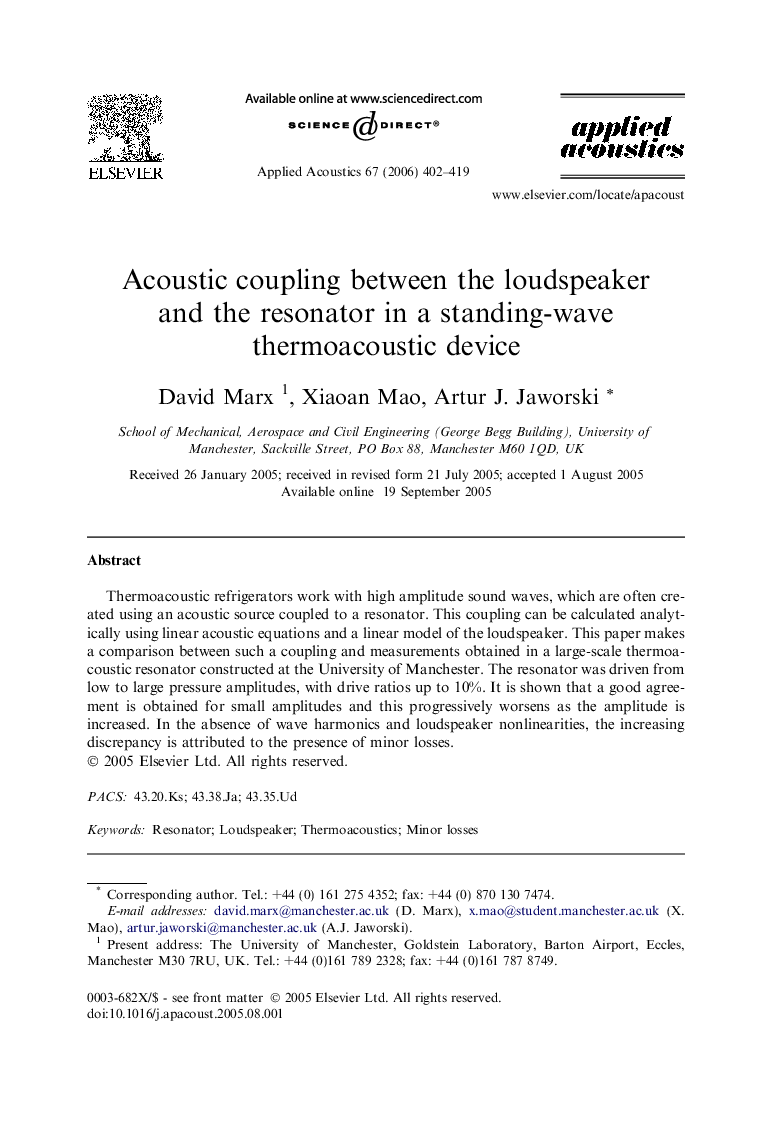| Article ID | Journal | Published Year | Pages | File Type |
|---|---|---|---|---|
| 755566 | Applied Acoustics | 2006 | 18 Pages |
Thermoacoustic refrigerators work with high amplitude sound waves, which are often created using an acoustic source coupled to a resonator. This coupling can be calculated analytically using linear acoustic equations and a linear model of the loudspeaker. This paper makes a comparison between such a coupling and measurements obtained in a large-scale thermoacoustic resonator constructed at the University of Manchester. The resonator was driven from low to large pressure amplitudes, with drive ratios up to 10%. It is shown that a good agreement is obtained for small amplitudes and this progressively worsens as the amplitude is increased. In the absence of wave harmonics and loudspeaker nonlinearities, the increasing discrepancy is attributed to the presence of minor losses.
